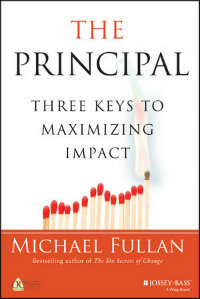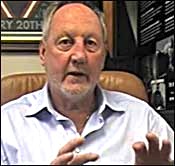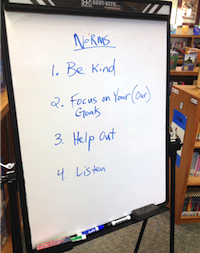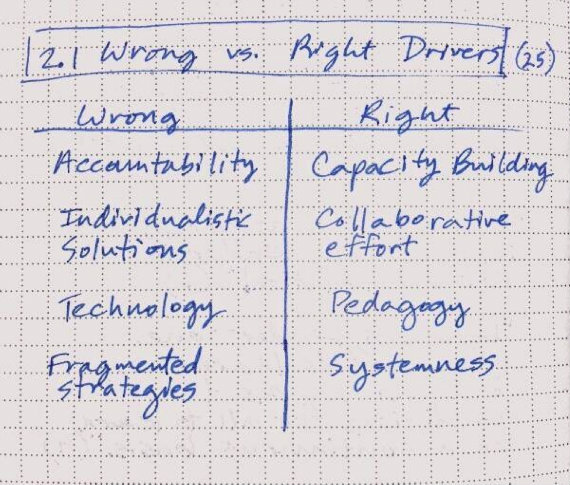How Principal Leadership Can Impact Student Achievement
The Principal: Three Keys to Maximizing Impact
By Michael Fullan
(Wiley, 2014 – Learn more)

Thought leader and educational change expert Michael Fullan asks, “What should the principal do to maximize student achievement?” As an elementary principal, I find this is a question constantly on my mind.
In his book Fullan wastes no time in getting to the point: “The principal as direct instructional leader is not the solution!” (p 6). From this initial statement, I admittedly took a cognitive step back. It is counter-culture to how I was educated and trained. Instead, Fullan suggests that principals act as learning leaders, someone “who models learning, but also shapes the conditions for all to learn on a continuous basis” (p 9).

This knowledge has led to some very powerful conversations about what good writing looks like and sounds like in our K-5 building. Right now, we are in the midst of posting mid-year exemplary writing pieces at each grade level in the hallway. Each sample is tagged with a student reflection about their final product. This crosswalk of excellence, fueled by focused collaboration, may not have occurred without my understanding of effective writing instruction.
Fullan recognizes the pitfalls principals can encounter when trying to move a building forward. He recalls his previous work about the right and wrong drivers when leaders attempt to enact whole school change:
Two of the wrong drivers that I immediately identified with were accountability and technology. My school has embarked on a multi-year initiative to embed digital student portfolios in every classroom. In the first year, I offered brief explanations of how to use our new iPads in the classrooms, coupled with a checklist of steps to accomplish on teachers’ own time. The hard reality I encountered was (a) teachers didn’t love technology as much as I did, and (b) I didn’t give enough reasons to use it, nor the time to learn how to use it well.
Now a more seasoned adult educator, I keep my direct instruction about technology to a minimum, create screencasts of my tutorials to be reviewed later, and allow for ample time to try out the new tools. Our teachers have been more receptive to this, because they see the relevance in this work, as well as how digital portfolios can provide the additional piece of assessment information we need to make more responsive decisions about future student instruction.
The Three Keys
As the subtitle suggests, there are three keys that Fullan believes principals should focus on to maximize impact on student achievement.
The First Key: Leading Learning

As an example, Fullan suggests that our attention should be on how teams work together toward a common goal, more so than our discrete, day-to-day interactions with teachers. “Human capital should not be thought of as the main driver to develop the school” (p 72). This concept seems counterintuitive to the concept of getting into classrooms on a daily basis to provide feedback for teachers on performance. But Fullan is adamant that any kind of collective growth you expect to see within a school system will stem from how the smaller and larger collaborations move forward together. “Little meaningful change results unless and until social capital enables the group to get its act together” (p 72).
The Second Key: Being a District and System Player
Fullan sees great potential for schools to grow when they pair up with other like schools in order to compare practices. “Set up cross-visits of subsets of teachers, arranged to share practices that are getting results” (p 102). My school is seeing firsthand the benefits of these types of activities. We have been selected as a Spotlight School by our state’s department of education. Other schools have come to visit our site, observing instruction in classrooms and reflecting on how our best practices compare to their learning environments. The back-and-forth between each school has been some of the best professional development we have experienced.
The Third Key: Becoming a Change Agent
The author derides the voluminous (and ubiquitous) school/district improvement plans. “Be aware of ‘fat plans’ – focus on a few clear goals” (p 130). Although I have been known to make mistakes, this is one area we have done well in this year. Our professional development plan was required (by me) to be no longer than one page.

A straightforward, helpful and important book
In The Principal: Three Keys to Maximizing Impact, Michael Fullan provides a straightforward, easy-to-follow template for principals at every level to help them implement change well. Coupled with other resources that can support the improvement process, The Principal is an important book for any administrator or school leader looking to become better thought leaders and change agents within their current organization.
Matt Renwick is a 15-year public educator who began as a 5th and 6th grade teacher in a country school outside of Wisconsin Rapids, WI. After seven years of teaching, he did time as a junior high dean of students, assistant principal and athletic director before becoming an elementary principal in Wisconsin Rapids. Matt blogs at Reading by Example, tweets @ReadByExample and writes for EdTech magazine. His book Digital Student Portfolios in the Classroom is published by ASCD.


































